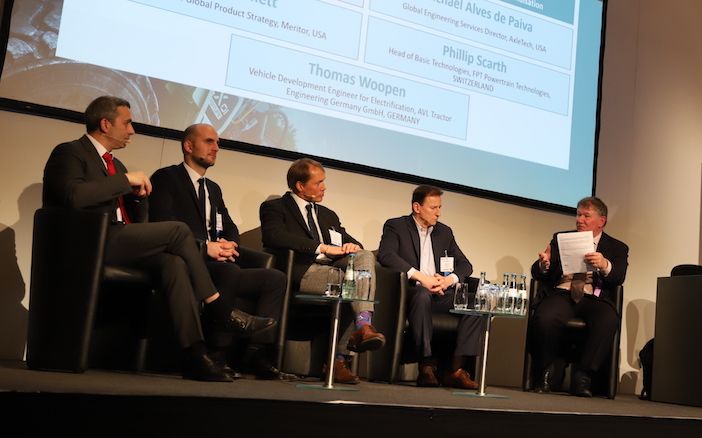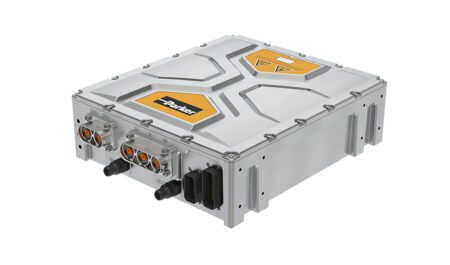During a panel discussion at this week’s (February 13-14) Industrial Vehicle Powertrain Technology Conference at iVT Expo, experts from across the industry explained their ongoing efforts to adapt to rapidly changing component demands from OEMs.
The discussion, which took place along with attendees from the concurrent Electric & Hybrid conference, highlighted the fact that the move to some level of electrification in virtually all types of off-highway machinery means traditional components are at risk of becoming obsolete.
John Bennett, chief technology officer at Tier 1 supplier Meritor, said, “We make axles, brakes, driveline suspension and other assorted other drivetrain components. We have been very active in electrification firstly because we’re looking forward and we see a day when all our core content becomes obsolete. And we are trying to prevent that from happening. But it’s also an opportunity for growth.”
Bennett went on to outline how the integration of electric motors into axles will completely change the axle and braking systems of the future. “Maybe contrary to popular opinion a conventional axle is not optimized and really shouldn’t be used in an electric vehicle,” he told the packed hall. “Because the durability will reduce considerably, primarily because of the regenerative breaking that comes back through the gear set.”
“We’re developing revolutionary products by integrating the electric motor into the axle itself and we’re developing a platform of e-axles in anticipation that the market will ultimately shift from a remote motor configuration into an integrated motor configuration.
Challenged by an audience question on the efficiency of e-axles, Bennett was bullish. “I believe if you look a remote motor vs an integrated motor there isn’t anything inherently different in the efficiency,” he said. “If you have a remote motor with a multispeed transmission or an integrated one with a multispeed transmission, they should have similar efficiency. And from a weight standpoint the integrated solution has a big advantage.”
As these new technologies are developed OEMs are seeing increasing pressure on testing and validation cycles. It was for this reason that Philip Scarth, head of basic technologies at FPT Powertrain, who was also in the panel (below), advocated an increase in focus on virtual testing techniques.
“I think the area we need to be a lot more solid on is virtualization,” said Scarth. “Because physical testing is very good, but it’s not always practical given the level of complexity. We really need to put a lot more effort into simulation of the complete system. Including the whole vehicle, where possible. This is the only way that I see it is possible to move forward in a reasonable way.”






